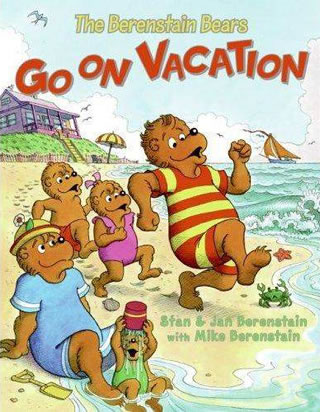 |
Canku Ota
|
 |
|
(Many Paths)
|
||
|
An Online Newsletter
Celebrating Native America
|
||
|
September 1, 2010 -
Volume 8 Number 9
|
||
|
|
||
|
Berenstain Bears
Help Keep Lakota Language Beating
|
||
|
by Sarah Reinecke -
The (Sioux Falls, SD) Argus Leader
|
||
Soon, the popular Berenstain Bears cartoon characters will help bring the Lakota language to life in homes across the region. Twenty episodes of the animated cartoon series will be translated, recorded and broadcast on South Dakota Public Television starting in the fall of next year, with all dialogue in Lakota. It's the first time in the United States that any cartoon series has been translated to a Native American language and widely distributed, said Wilhelm Meya, executive director of Lakota Language Consortium, a nonprofit organization that partnered with the Standing Rock Sioux Tribe to co-produce the Lakota version of the series. A DVD and teacher's guide also will be released next summer to be used in area schools. "It's super exciting and such a powerful vehicle," Meya said. "We needed something that would work well to attract kids to a language, and it's just magical to see it all come together." Meya said less than 10 percent of the 125,000 Lakota people in the region, which primarily consists of South Dakota and North Dakota, speak the ancient language. The goal is to use the modern cartoon as an educational tool to teach young people the language. "When you see Lakota being used in a kitchen and a whole family interacting, it just makes the language so real and not so much of an abstract concept that you learn in school," Meya said. Meya said the Berenstain Bears cartoon series works well to educate kids on the Lakota language because of the heavy use of hand gestures. That makes it easy for non-speakers to have a sense of what's happening. "There's so much context and gesturing that create hints," he said. "It will help kids understand." Meya said the project is being paid for primarily through the Standing Rock Sioux Tribe. Mike Berenstain of Berenstain Enterprises waived all licensing fees for the tribe to complete the educational series. Sunshine Carlow, tribal education manager for the Standing Rock Sioux Tribe, said students have about an hour a week of Lakota language in school, but the tribe wanted the language to play a larger role in the lives of children and their families. The
project "is a way of competing with the mainstream in a way
that makes it relevant to our youth today, but is a big part in
keeping our tradition and cultures alive," she said.
About 25 people have been working on the project for nine months, and 15 voice actors spent three weeks in July in Bismarck, N.D., recording 10 episodes. Meya hopes to have the final 10 recorded by December. Gov. Mike Rounds, who declared 2010 a Year of Unity in South Dakota, was traveling Monday, but said in an e-mail that the Lakota language is "an essential part of the rich Native American heritage," and he commends the efforts to ensure the language is not lost. "It's extremely important to pass along ancestral traditions and culture to young people so they can someday do likewise with generations to come," Rounds said. Dainna Red Owl, who supplies the voice of Mama Bear, said the most difficult part of the process was translating. Red Owl, who teaches at Little Wound Middle School in Kyle, said the actors are from different communities and speak Lakota in varying dialects. Deciding which dialect to use was difficult. Meya said it also was challenging to translate words such as "Halloween" that appear in episodes and are not part of the Lakota language. Actors worked together to translate the lines in a way that would be easiest for kids to understand. Red Owl said kids are excited to see the show in Lakota on television. "They keep asking me, 'When can we see it?' " she said. "This is like another level of learning the Lakota language as far as technology goes." |
||||||||||||||||||
|
insert map here
|
|
|
||
|
|
||
| Canku Ota is a free Newsletter celebrating Native America, its traditions and accomplishments . We do not provide subscriber or visitor names to anyone. Some articles presented in Canku Ota may contain copyright material. We have received appropriate permissions for republishing any articles. Material appearing here is distributed without profit or monetary gain to those who have expressed an interest. This is in accordance with Title 17 U.S.C. Section 107. | ||
|
Canku Ota is a copyright ©
2000, 2001, 2002, 2003, 2004, 2005, 2006, 2007, 2008, 2009, 2010
of Vicki Barry and Paul Barry.
|
||
 |
 |
|
|
The "Canku
Ota - A Newsletter Celebrating Native America" web site and
its design is the
|
||
|
Copyright ©
1999, 2000, 2001, 2002, 2003, 2004, 2005,
2006, 2007, 2008, 2009, 2010
of Paul C. Barry.
|
||
|
All Rights Reserved.
|
||
 Twenty
episodes of the cartoon Berenstain Bears have been translated
into Lakota. (Submitted photo)
Twenty
episodes of the cartoon Berenstain Bears have been translated
into Lakota. (Submitted photo)